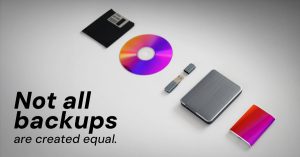In competitive markets, organizations are increasingly relying on Business Management Platforms ERP CRM in Ontario and across the globe to create seamless connections between operations and customer-facing functions. Enterprise Resource Planning (ERP) and Customer Relationship Management (CRM) systems, when used independently, already provide significant value. However, their integration amplifies this value by aligning back-office efficiency with front-office engagement. The result is a unified ecosystem that not only streamlines operations but also elevates the customer experience to new levels of personalization, responsiveness, and trust.
Why ERP and CRM Belong Together?
At their core, ERP systems manage internal processes such as supply chain, inventory, finance, and human resources, while CRM focuses on building, nurturing, and sustaining customer relationships. Businesses often implement them separately, which can result in data silos and inconsistent customer touchpoints. When integrated, these platforms create a holistic environment where customer data, operational workflows, and real-time insights converge to drive better decision-making and service delivery.
The combination of ERP and CRM directly addresses customer expectations for speed, accuracy, and tailored interactions. Clients want businesses to anticipate needs, resolve issues quickly, and provide relevant recommendations. A disconnected system cannot deliver this consistently. Integration ensures that every engagement is backed by accurate data, making each interaction meaningful.
How Integration Elevates Customer Experience?
1. A Single Source of Truth
Customers interact with multiple departments during their journey—sales, service, support, and finance. When these departments rely on isolated systems, the customer faces repeated questions, miscommunication, and errors. ERP and CRM integration establishes a single source of truth, ensuring that every employee interacts with updated and accurate data. This consistency builds confidence and trust with the customer.
2. Faster Response Times
Quick responses can be the difference between winning and losing a customer. Integrated systems give support agents and sales teams immediate access to order history, inventory status, and payment details. Whether addressing an inquiry about delivery times or resolving billing concerns, teams can respond without delay.
3. Personalized Interactions
Customers expect businesses to treat them as individuals rather than transactions. ERP and CRM integration enables deeper personalization by combining purchasing history, preferences, and operational data. This allows businesses to provide tailored offers, recommend relevant products, and anticipate needs.
4. Error Reduction and Accuracy
Manual data transfers between separate systems often lead to errors that frustrate customers—such as incorrect invoices, delayed shipments, or mismatched orders. Integration reduces human error by synchronizing data automatically. Accurate information ensures smoother transactions and a professional image.
5. Improved Order Fulfillment
Customers value reliable order processing above all else. With ERP handling inventory and supply chain management, and CRM managing customer orders, integration connects these processes. Businesses can provide accurate delivery estimates, avoid stock-outs, and keep customers informed throughout the order cycle.
Key Benefits for Businesses and Customers
ERP and CRM integration is not only about operational efficiency—it’s about reshaping how customers perceive and interact with the brand. Here are some core benefits:
-
Seamless communication across teams: Sales, finance, logistics, and customer service can collaborate effortlessly.
-
Enhanced visibility for customers: Customers gain real-time updates on their orders and requests.
-
Proactive service delivery: Businesses can address issues before they escalate by analyzing combined data streams.
-
Stronger customer loyalty: Personalized service and reliability foster long-term relationships.
-
Scalable customer experience: As businesses grow, integrated platforms can support increasing customer demands without sacrificing quality.
The Role of Data in Customer Experience
Data is the backbone of every modern interaction. Standalone CRM systems provide valuable insights into customer behavior, while ERP ensures accuracy in financial and operational aspects. When combined, businesses gain a 360-degree view that enhances decision-making.
For example, predictive analytics can identify when a customer is likely to reorder, while operational data can confirm stock availability. Together, these insights make it possible to deliver proactive service and exceed expectations.
Industry Applications
ERP and CRM integration improves customer experiences across diverse industries:
-
Retail and e-commerce: Real-time inventory updates, personalized promotions, and efficient return management.
-
Manufacturing: Accurate order tracking, production scheduling aligned with customer demand, and proactive maintenance updates.
-
Healthcare: Coordinated patient records with billing and treatment details for smooth service delivery.
-
Professional services: Unified project timelines, billing, and client communication.
-
Logistics: Transparent tracking, proactive updates, and reliable delivery commitments.
Each industry benefits from the same principle: combining operational accuracy with customer-centric intelligence.
Challenges in Implementation
Despite the clear benefits, integrating ERP and CRM requires planning and strategic execution. Common challenges include:
-
Data migration complexity – transferring legacy data into unified platforms.
-
User adoption issues – employees may resist new workflows without proper training.
-
System compatibility – older ERP or CRM systems may lack integration capabilities.
-
Cost and time investment – integration requires upfront resources, but the ROI comes in the form of improved efficiency and customer satisfaction.
Organizations that address these challenges with careful planning, phased implementation, and robust support often achieve smoother adoption and stronger long-term results.
Best Practices for Successful Integration
Businesses can maximize the benefits of ERP and CRM integration by adopting proven practices:
-
Assess current workflows: Identify pain points in customer interactions and operational inefficiencies.
-
Prioritize data quality: Cleanse and standardize data before integration to avoid duplication and errors.
-
Choose scalable platforms: Select systems that can adapt to growth and technological advancements.
-
Train employees thoroughly: Ensure teams know how to use integrated data to enhance customer conversations.
-
Monitor and refine: Continuously evaluate performance and adjust workflows for better outcomes.
Future Outlook
The integration of ERP and CRM is moving beyond simple data synchronization. Emerging technologies such as artificial intelligence, machine learning, and advanced analytics are enhancing predictive capabilities. Businesses will soon be able to anticipate customer needs even before they arise, providing unparalleled convenience and personalized service. Integration will also support omnichannel strategies, ensuring that customers receive consistent experiences across physical stores, online platforms, and mobile applications.
As expectations continue to evolve, businesses that align operational efficiency with customer-centric engagement through ERP and CRM integration will gain a sustainable advantage.
Conclusion
Customer experience is no longer a secondary concern—it is the foundation of competitive differentiation. By integrating ERP and CRM platforms, businesses connect internal efficiency with external engagement, offering faster, more accurate, and personalized interactions. The result is not just customer satisfaction but loyalty, advocacy, and long-term growth. Organizations that harness the synergy of these platforms are positioned to deliver experiences that consistently exceed expectations, regardless of industry.





